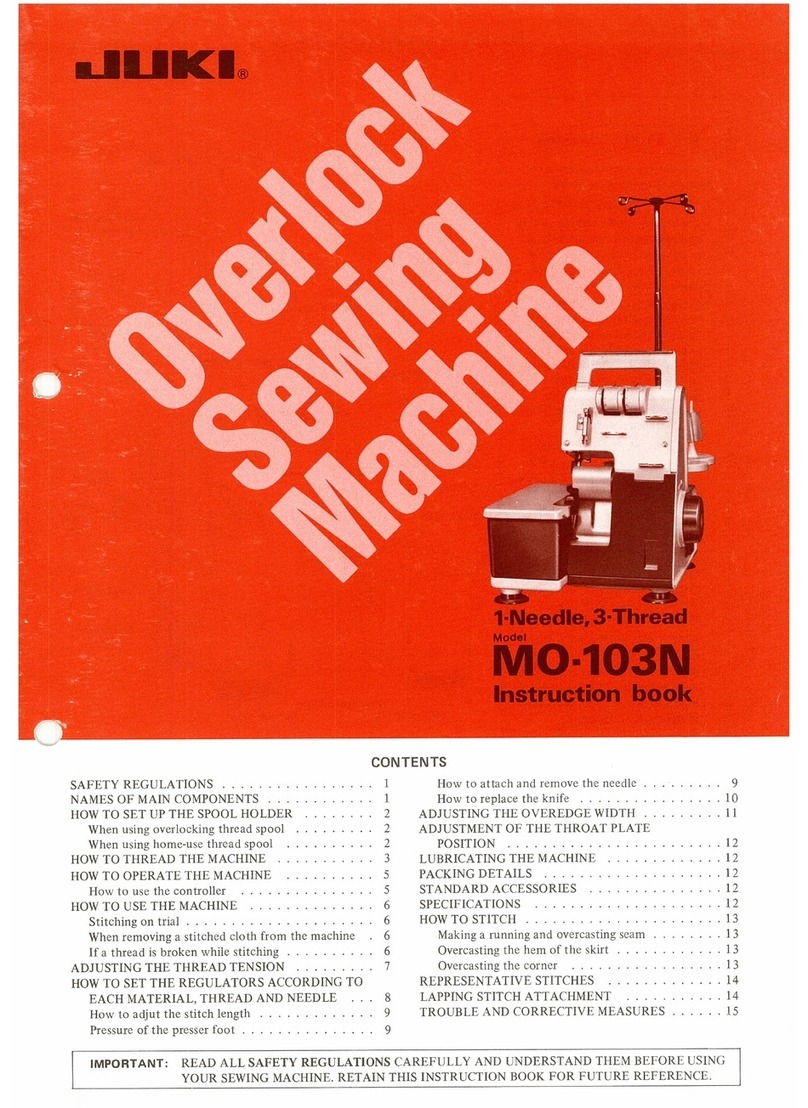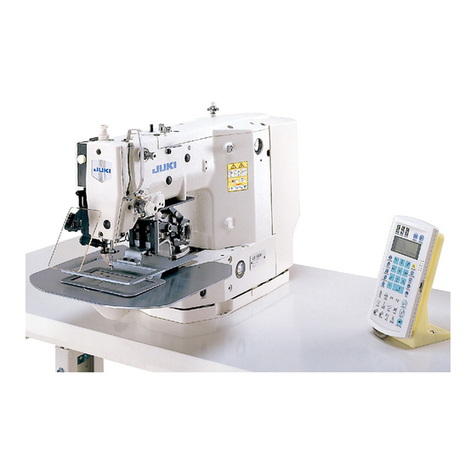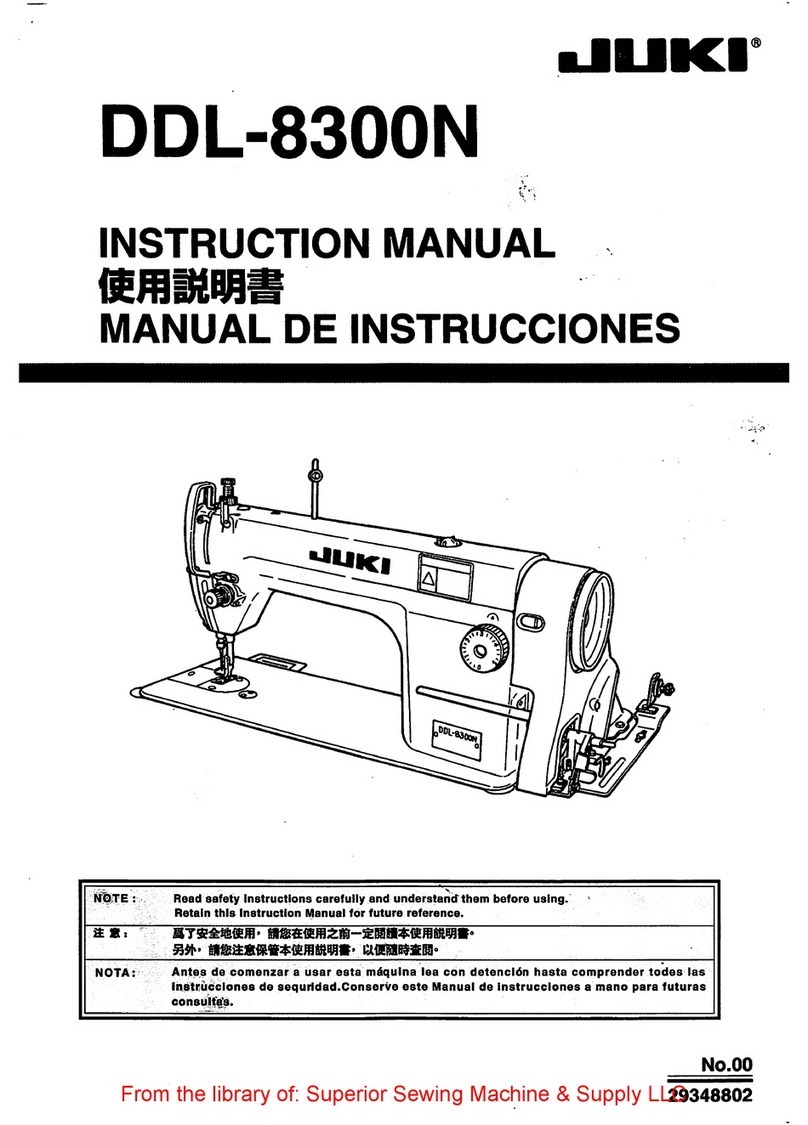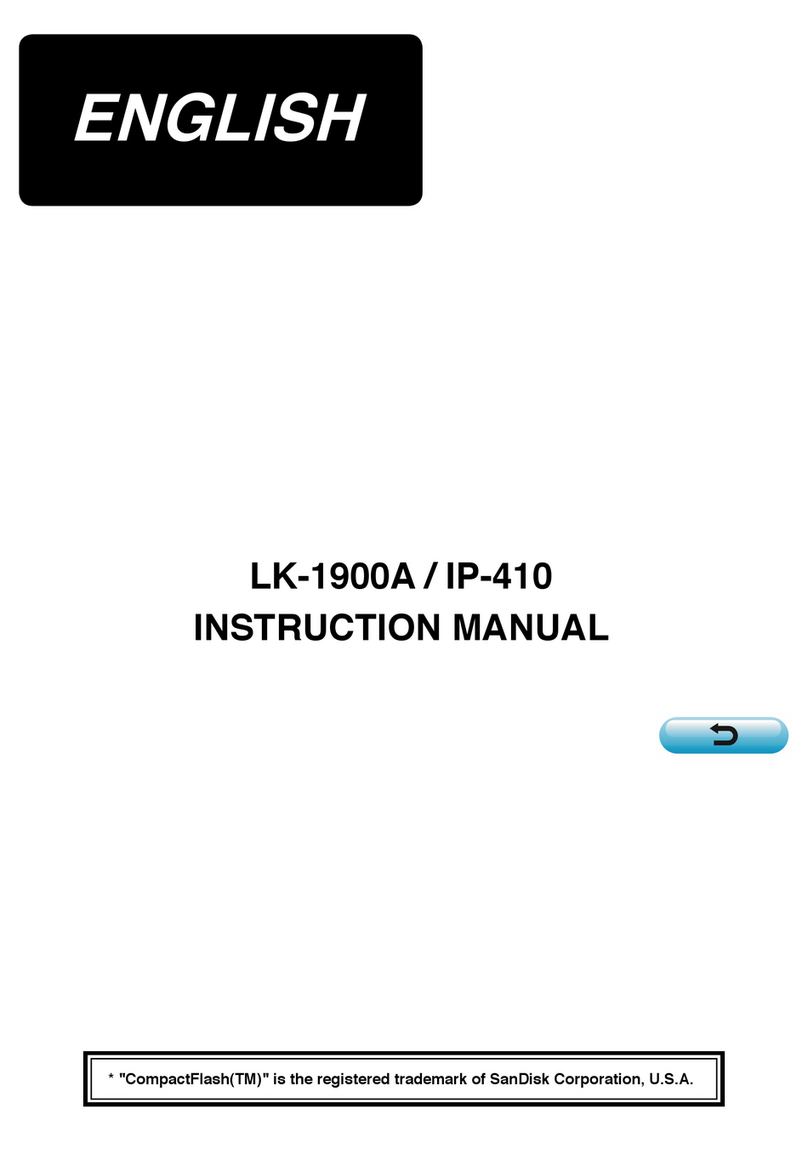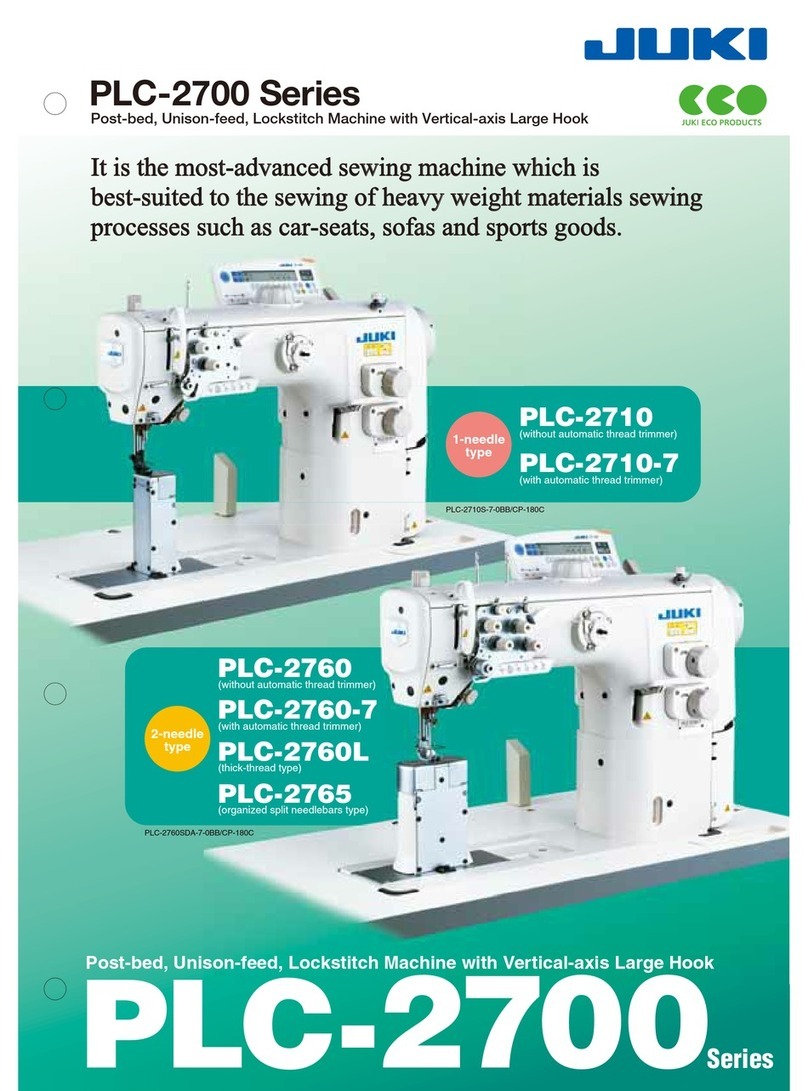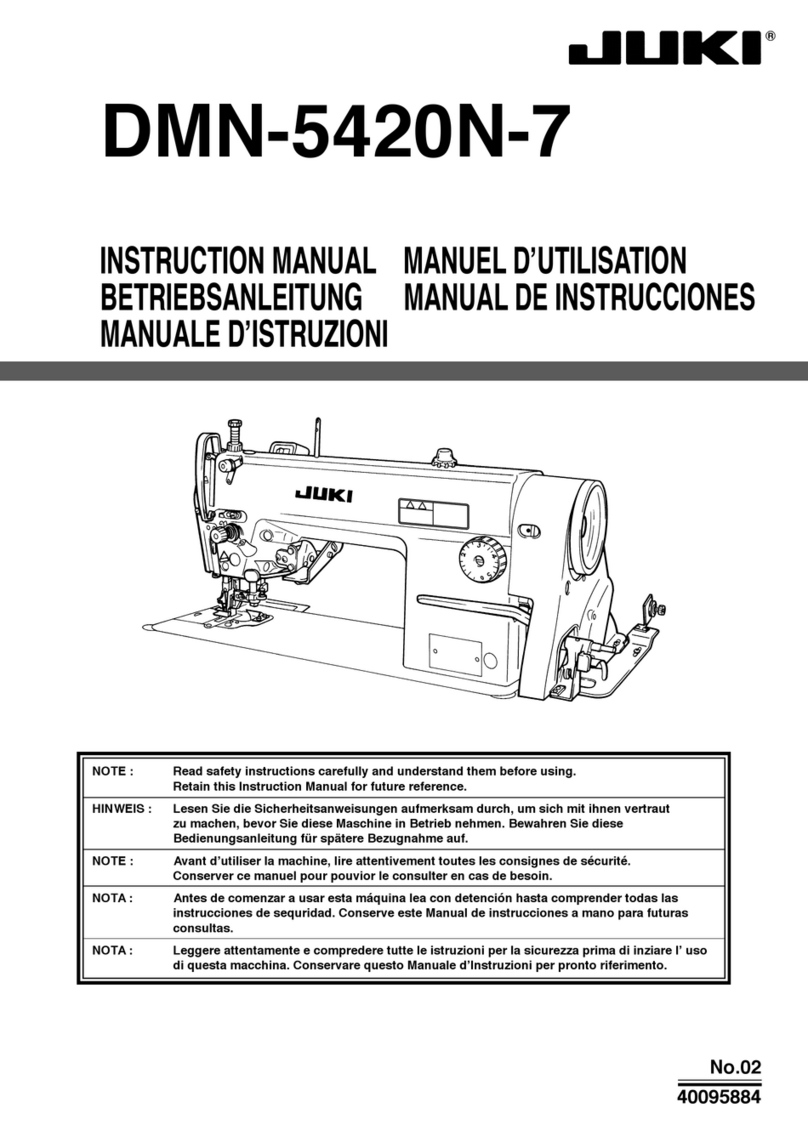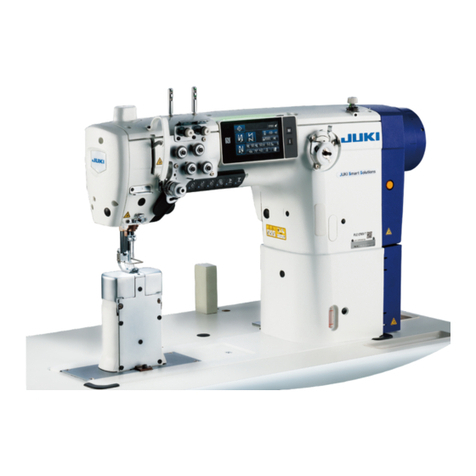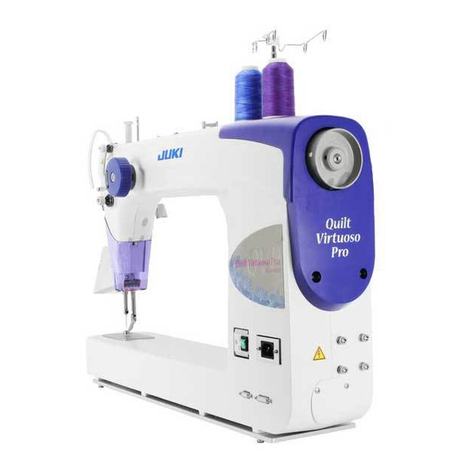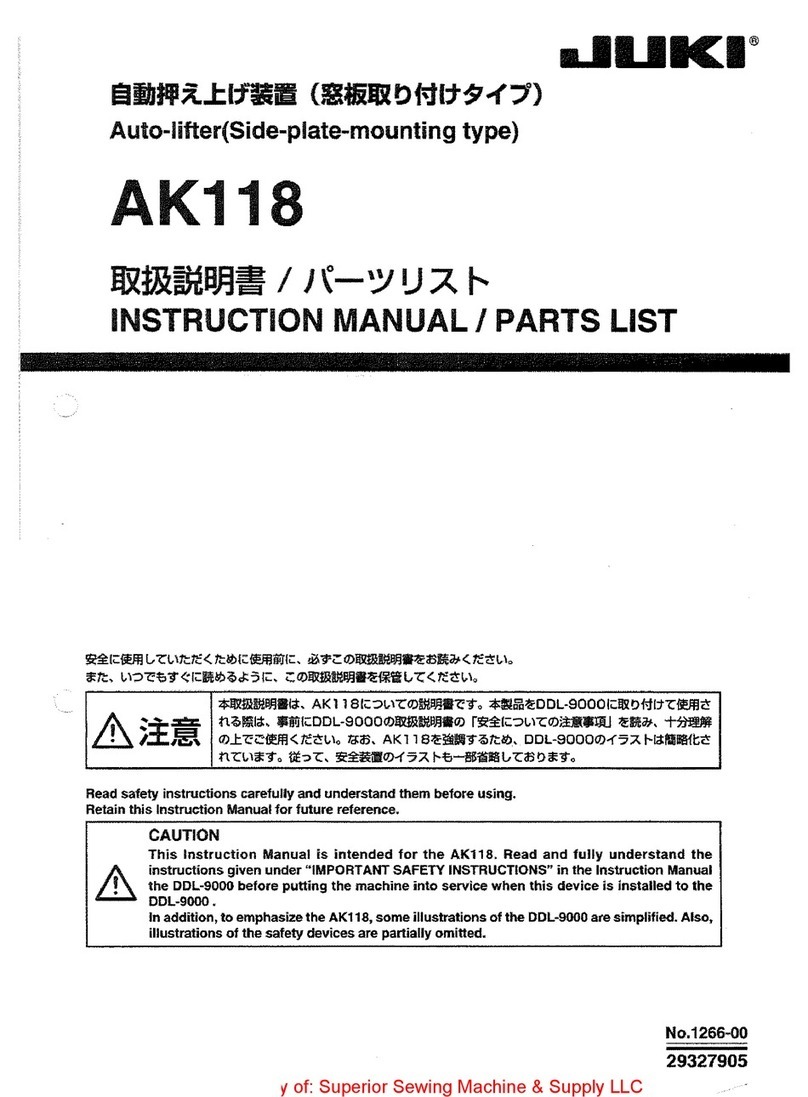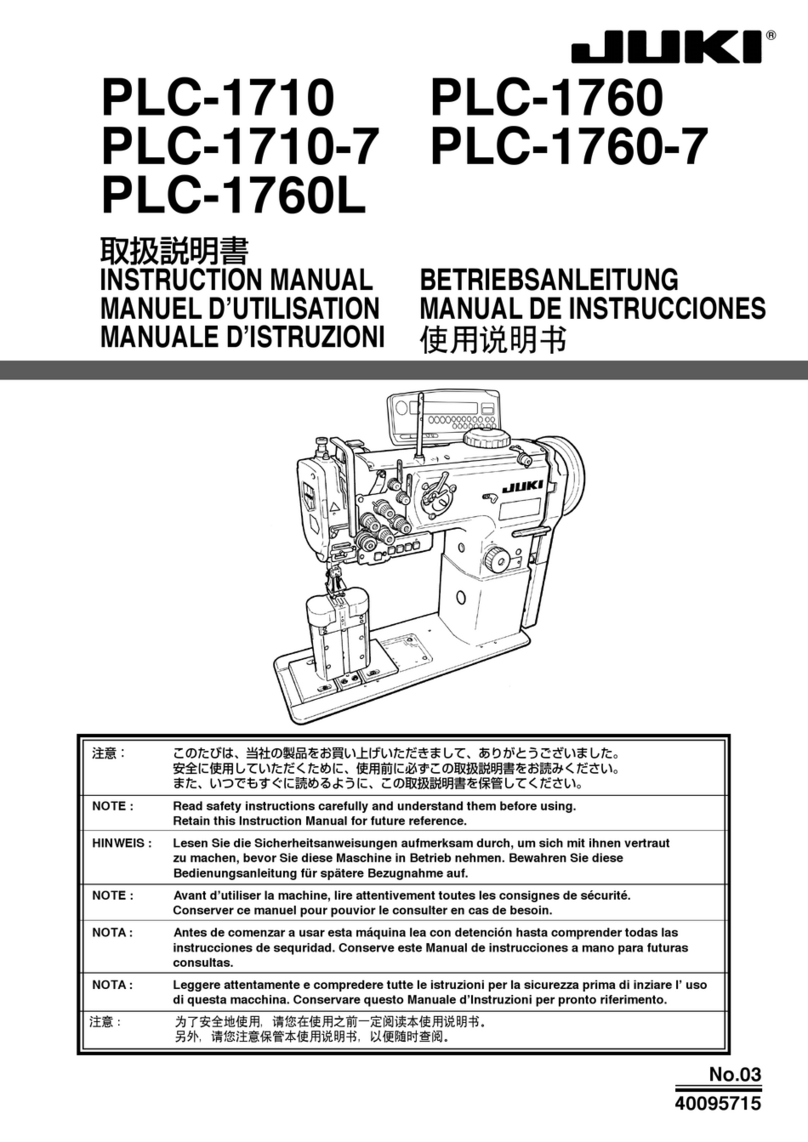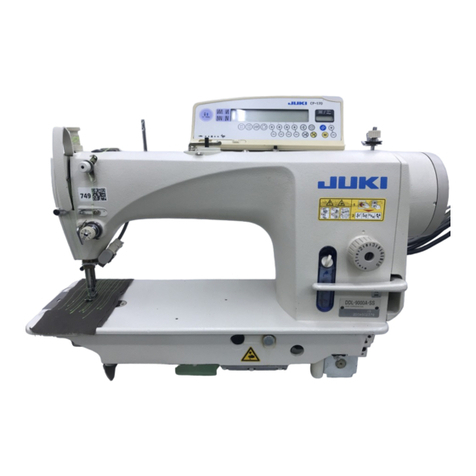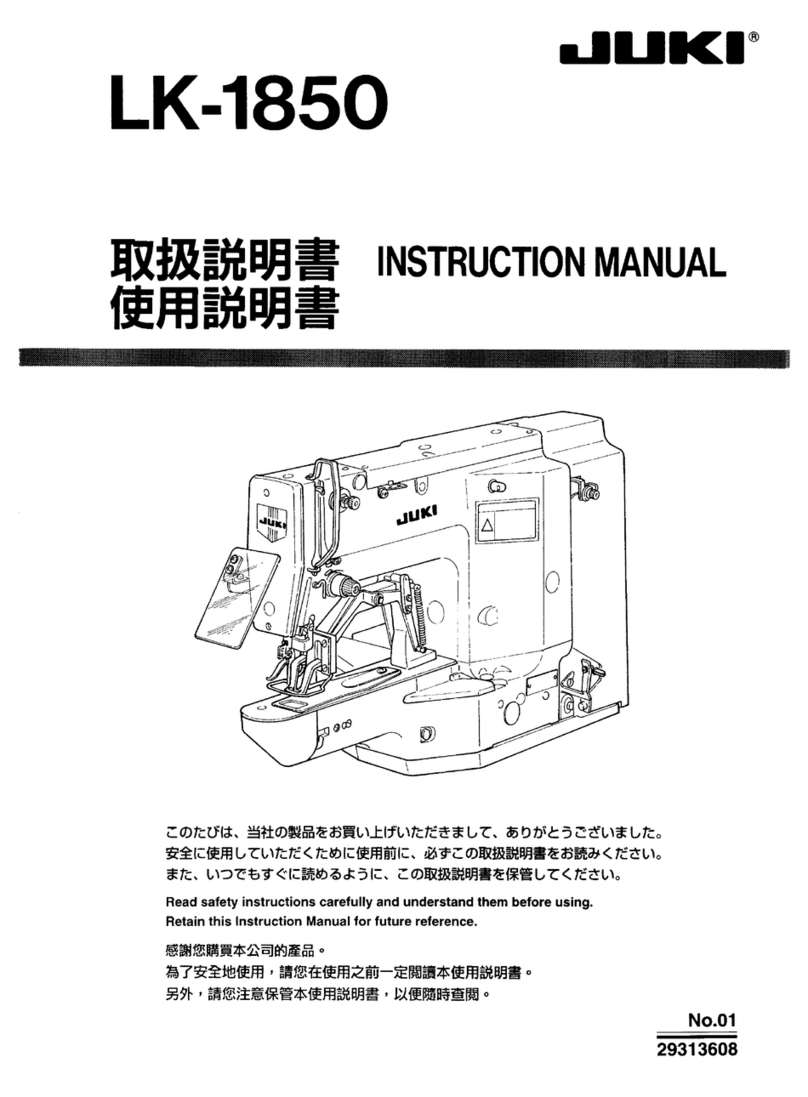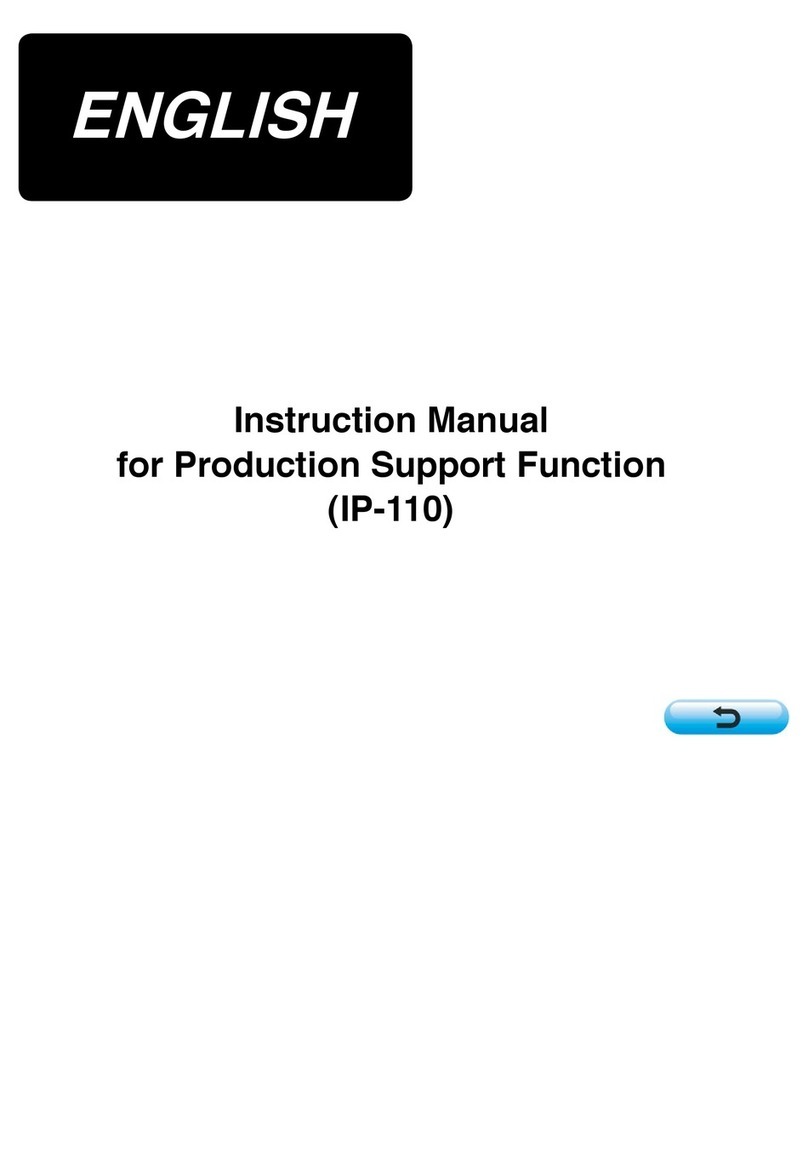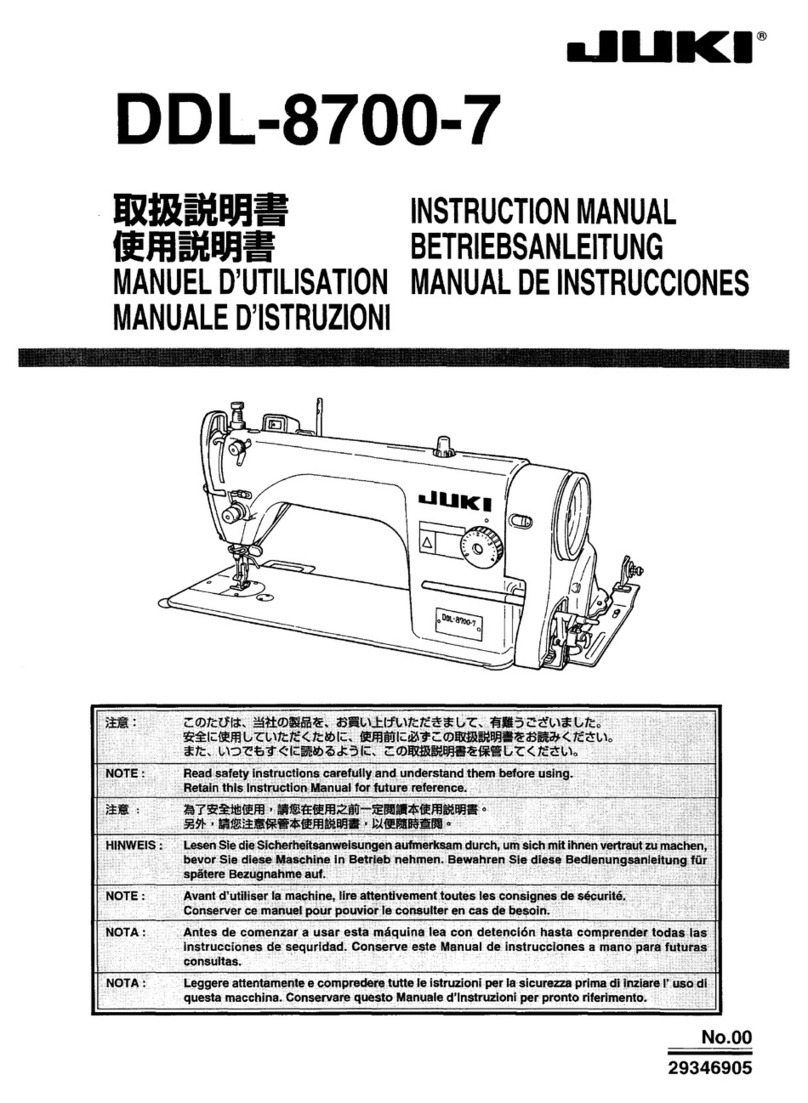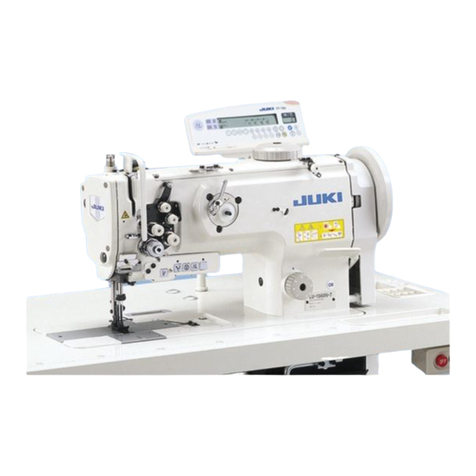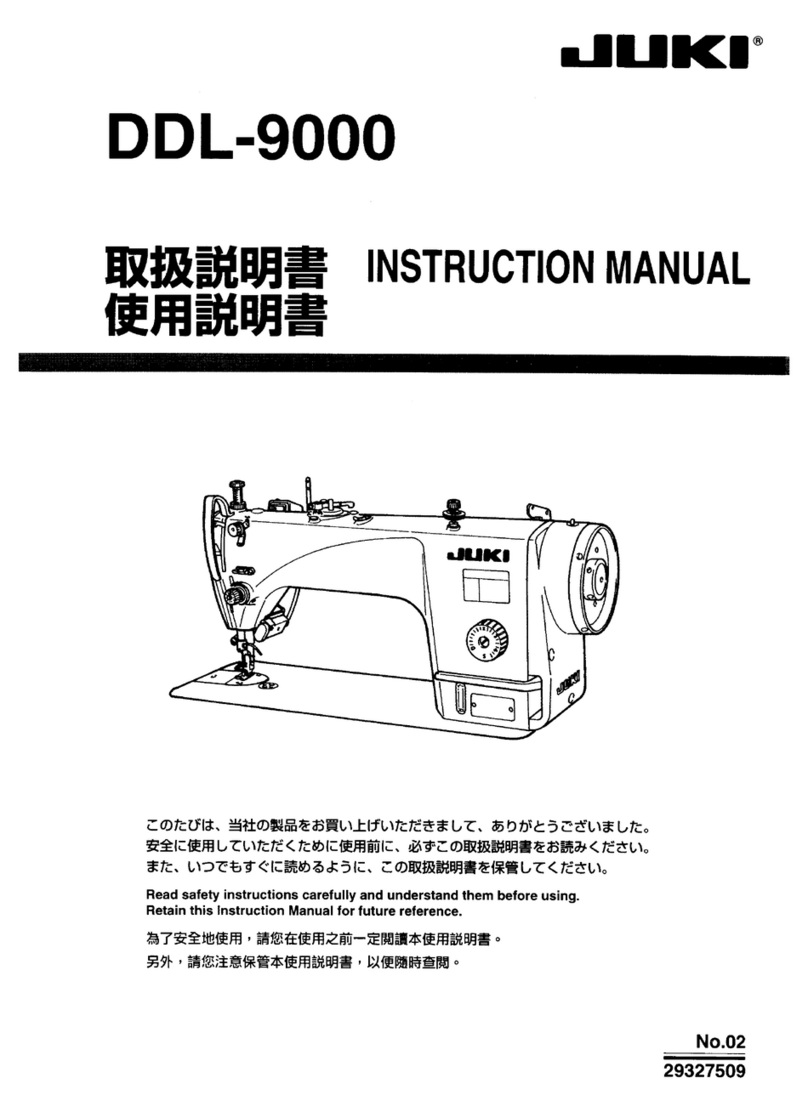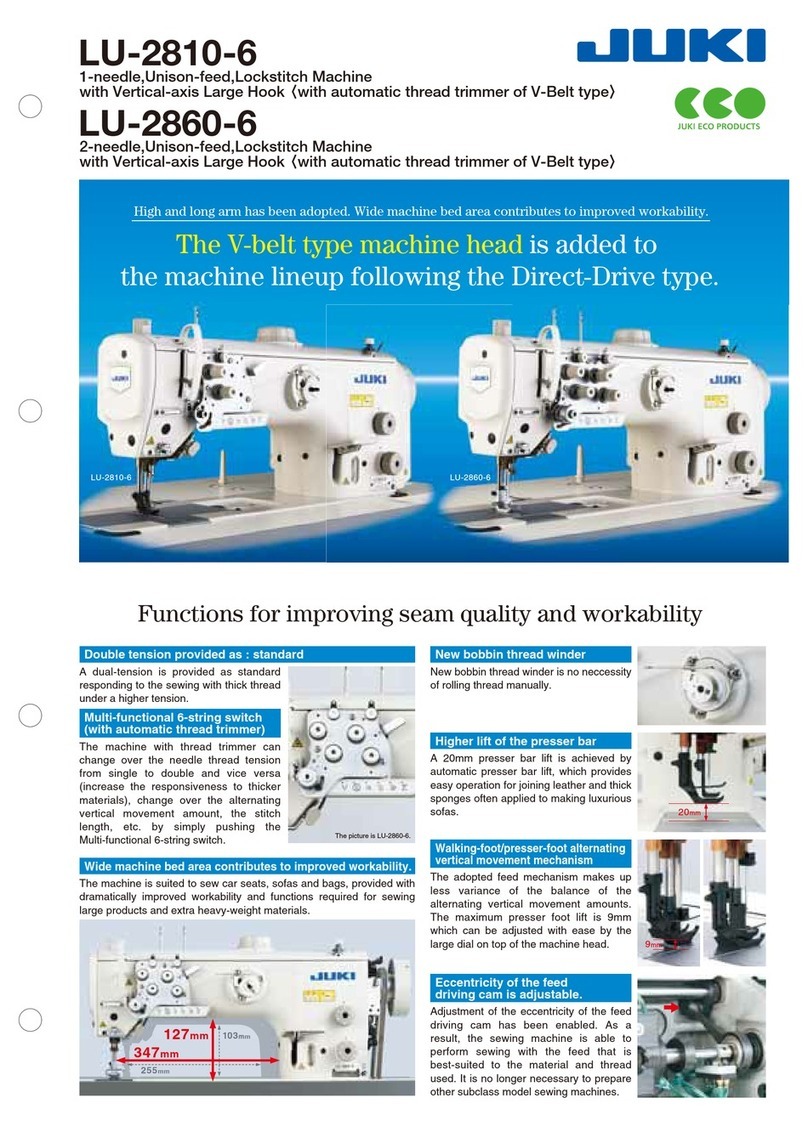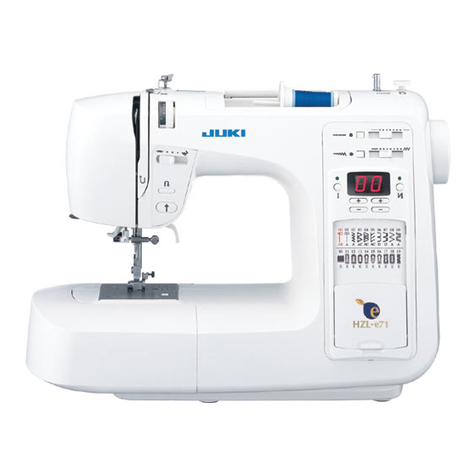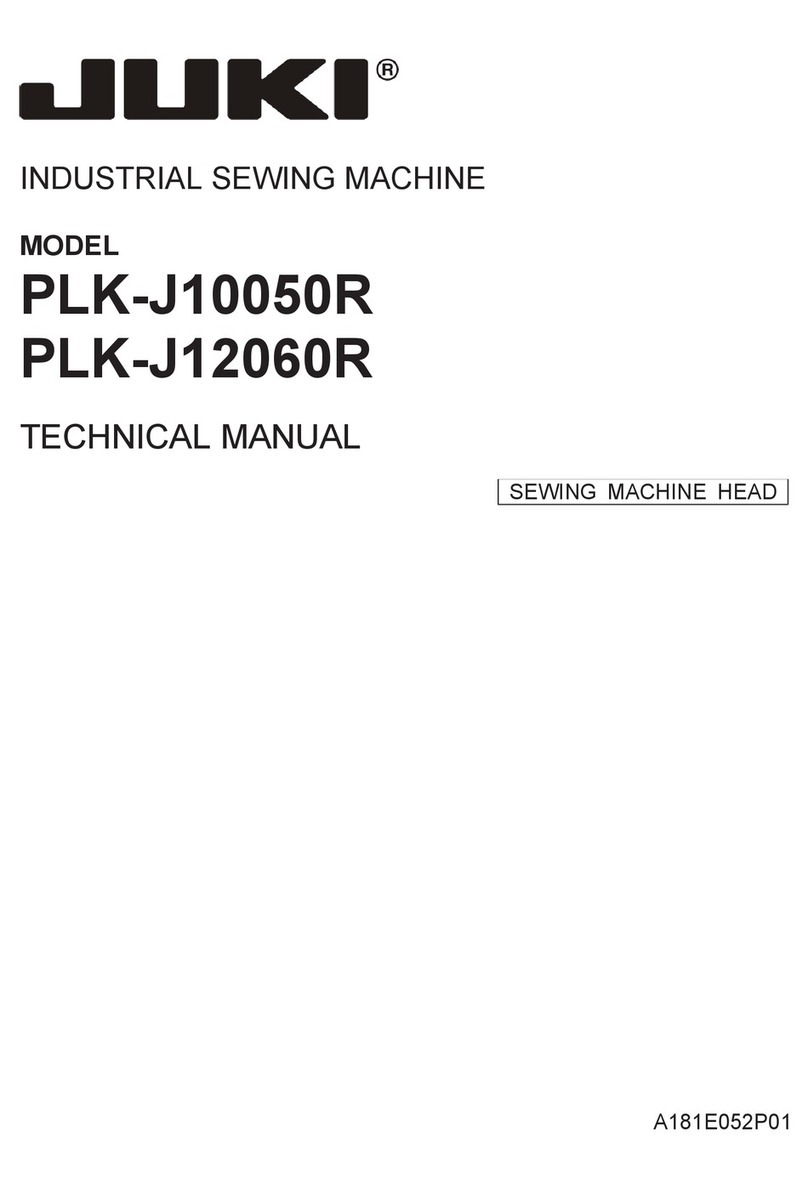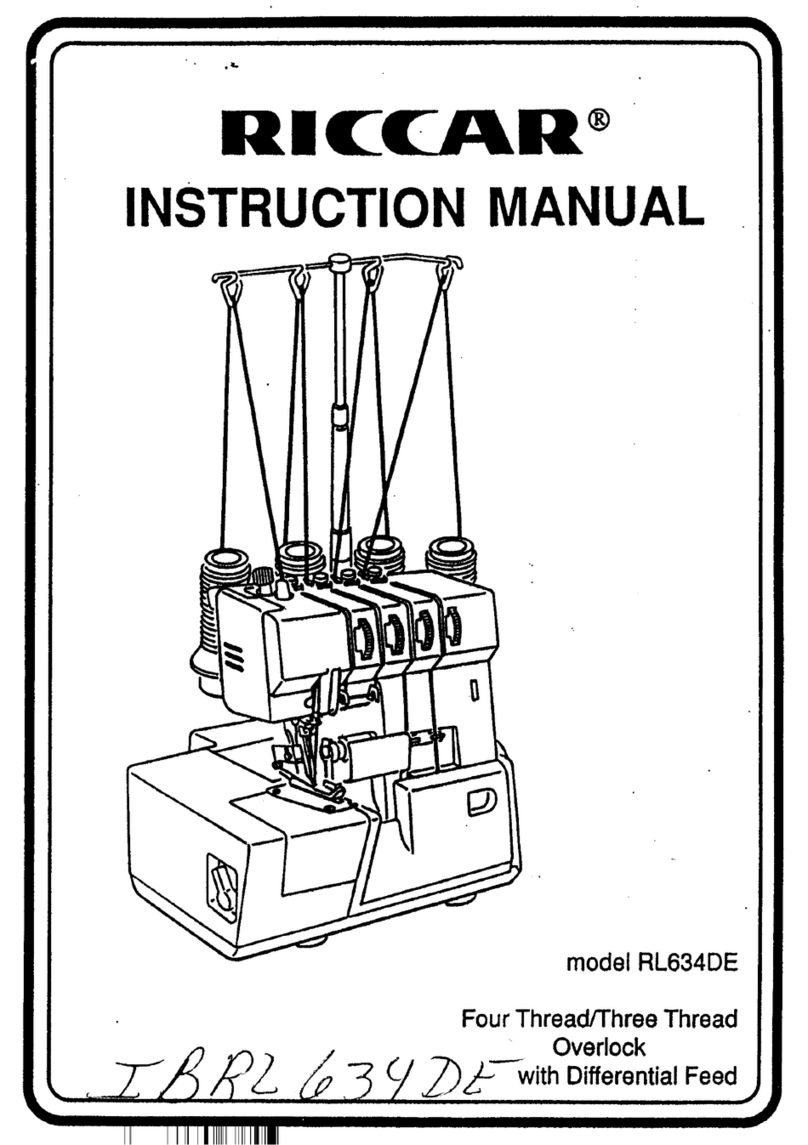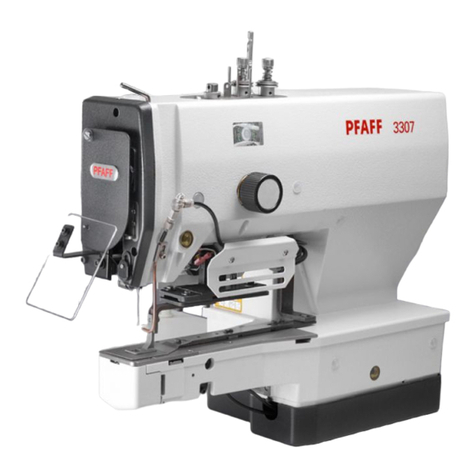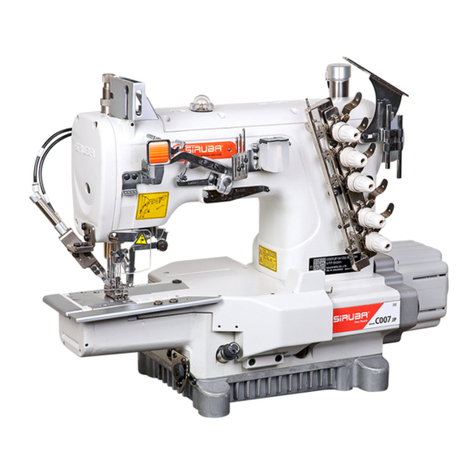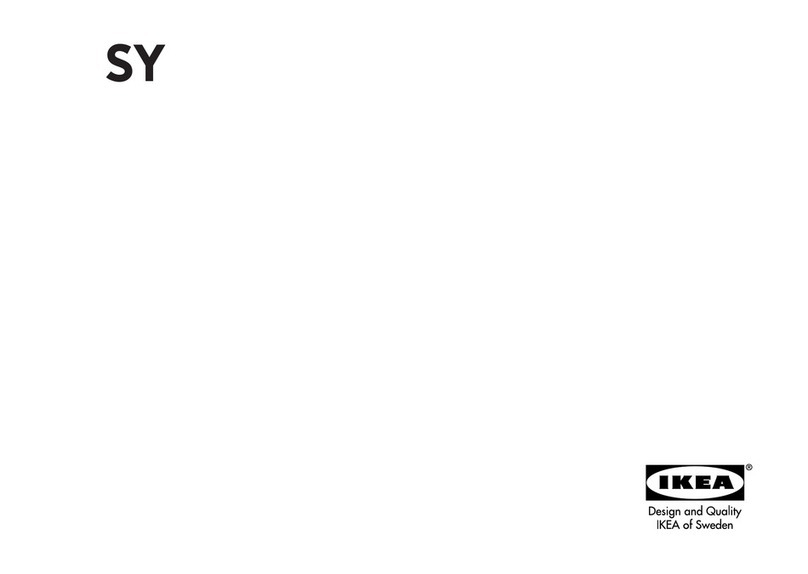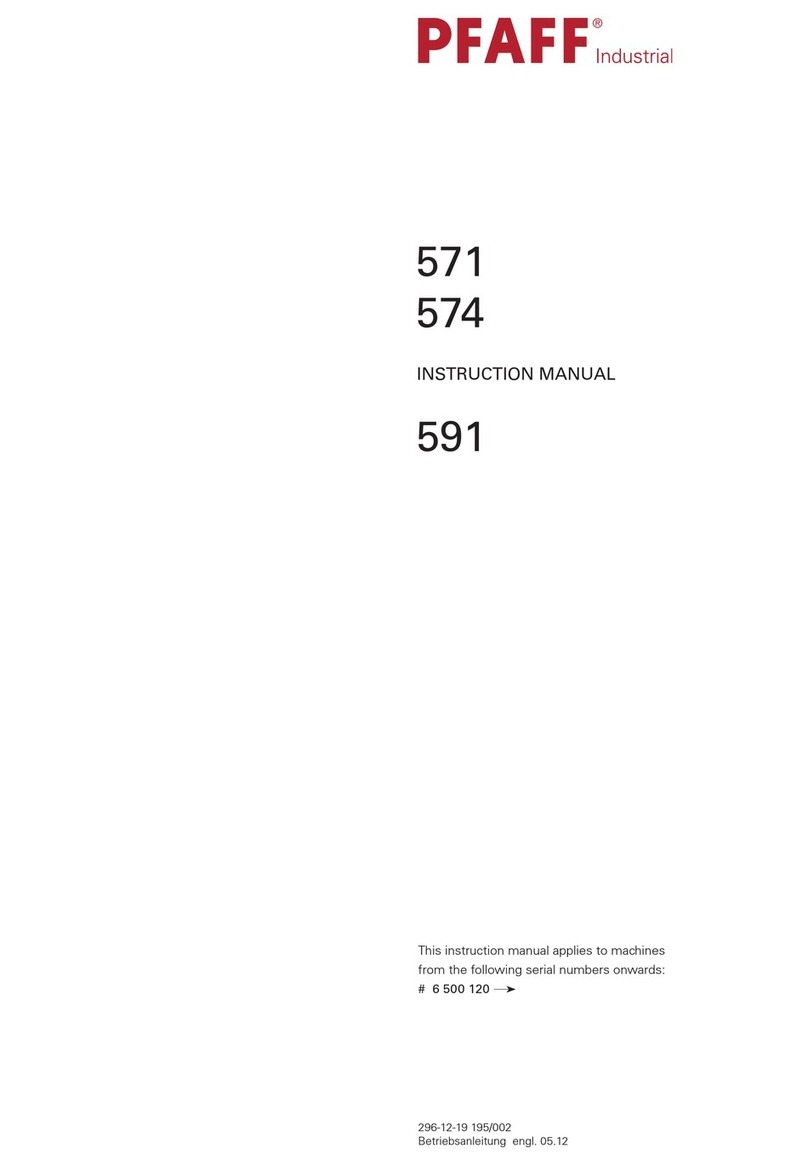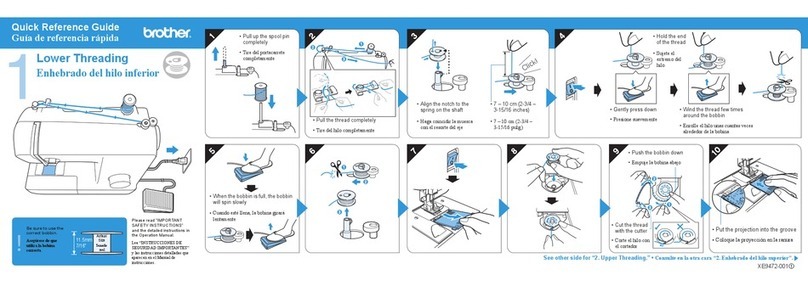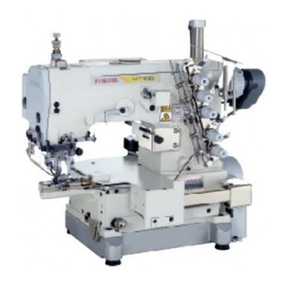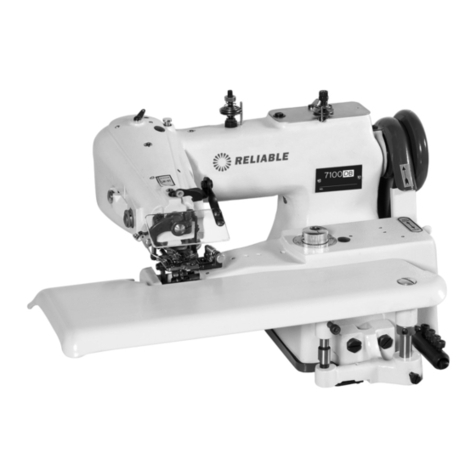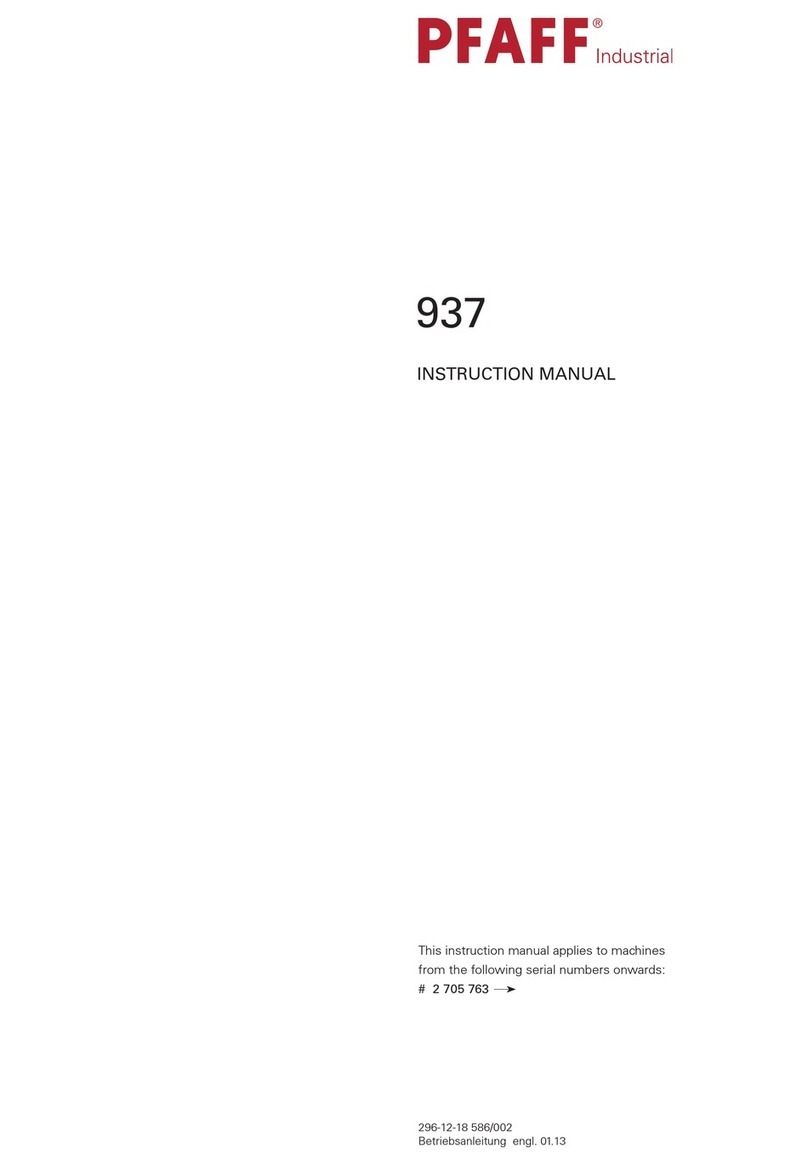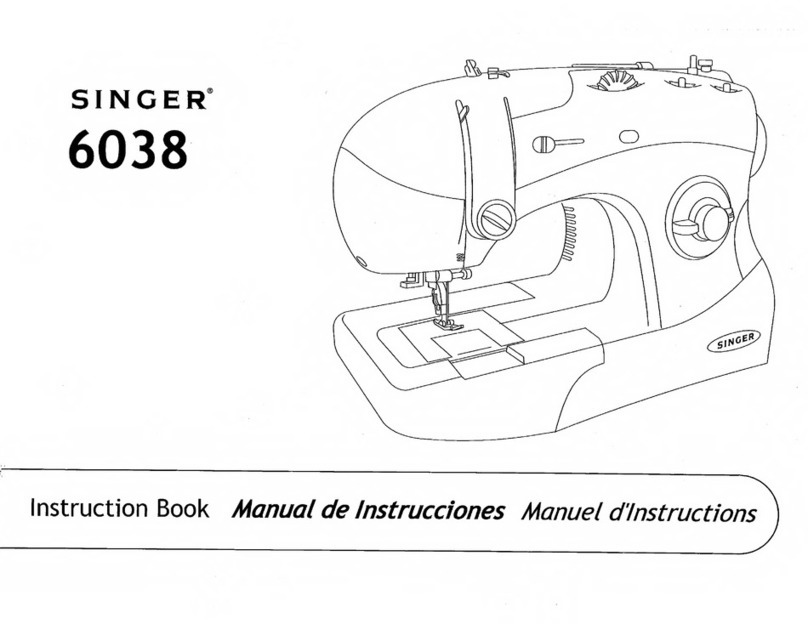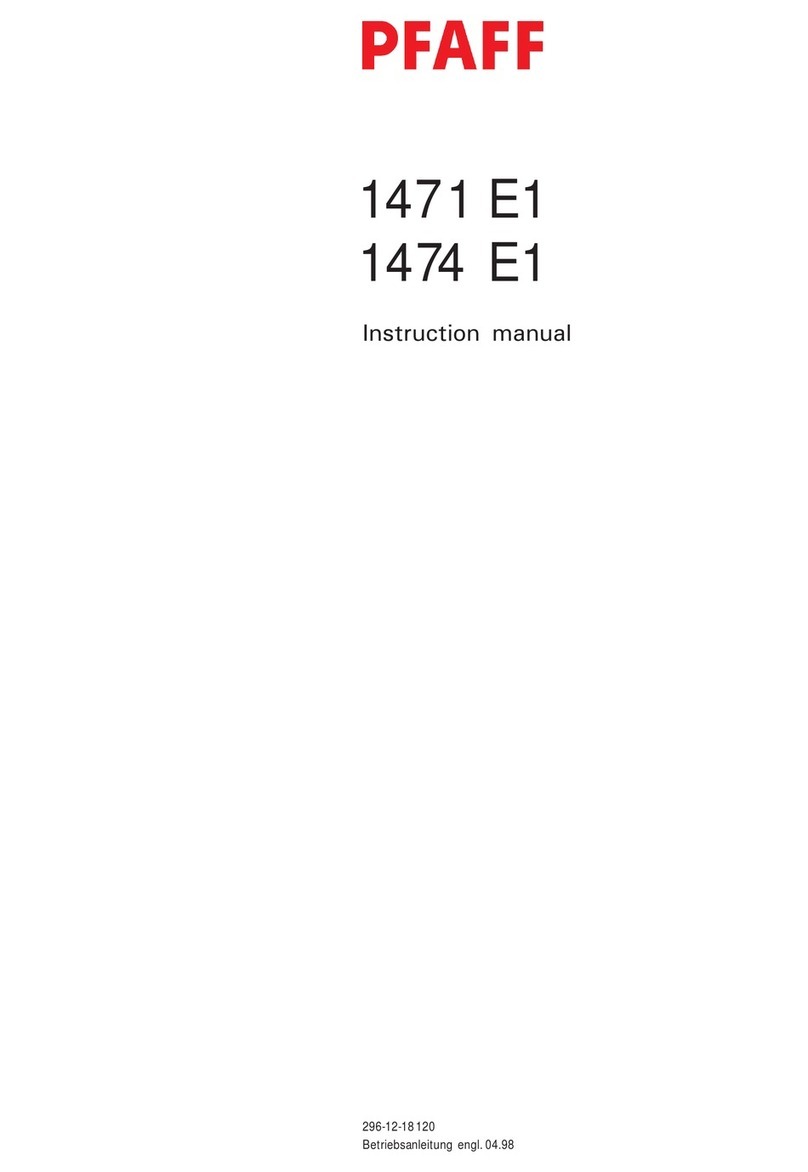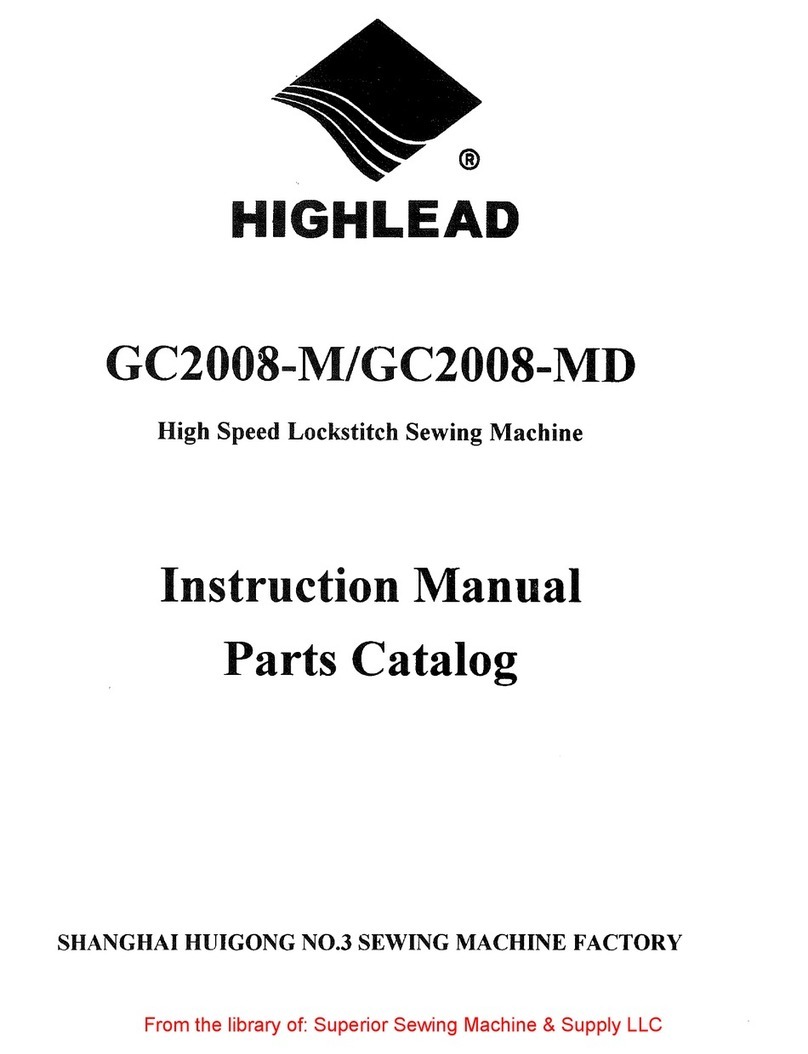
i
CONTENTS
1. SPECIFICATIONS......................................................................................................... 1
2. INSTALLATION............................................................................................................. 4
2-1. Installation of the sewing machine................................................................................................4
2-2. Adjusting the belt tension (PLC-2710, 2760, 2760L, 2765) ..........................................................6
2-3. Pneumatic components..................................................................................................................7
2-4. Attaching the belt cover (PLC-2710, 2760, 2760L, 2765) .............................................................9
2-5. Installing the thread stand ........................................................................................................... 10
2-6. Installing the thread guide pin.....................................................................................................10
3. PREPARATION OF THE SEWING MACHINE .......................................................... 11
3-1. How to set the model of the machine head ................................................................................ 11
3-2. Adjusting the machine head
(PLC-2710-7, 2760-7).......................................................................... 13
3-3. Installing the detector (PLC-2710, 2760, 2760L, 2765; when the option kit is used) .............. 15
3-4.
Opening/closing the hook cover.................................................................................................. 17
3-5. Lubrication.....................................................................................................................................17
3-6. Attaching the needle.....................................................................................................................20
3-7. Attaching and removing the bobbin............................................................................................ 21
3-8. Threading the hook.......................................................................................................................22
3-9. Winding a bobbin..........................................................................................................................23
3-10. Threading the machine head ..................................................................................................... 24
4. ADJUSTING THE SEWING MACHINE ..................................................................... 27
4-1. Adjusting the stitch length...........................................................................................................27
4-2. Thread tension .............................................................................................................................. 28
4-3. Thread take-up spring .................................................................................................................. 29
4-4. Needle-to-hook relation................................................................................................................30
4-5. Adjusting the hook needle guard ................................................................................................31
4-6. Adjusting the bobbin case opening lever...................................................................................31
4-7. Position of the counter knife and adjustment of the knife pressure........................................ 32
4-8. Adjusting the pressure of the presser foot ................................................................................32
4-9.
Adjusting the amount of the alternating vertical movement of the walking foot and the press-
er foot .................................................................................................................................................... 33
5. OPERATION OF THE SEWING MACHINE................................................................ 34
5-1. Hand lifter ...................................................................................................................................... 34
5-2. Resetting the safety clutch .......................................................................................................... 34
5-3. Fixing the feed adjusting dial.......................................................................................................35
5-4. Normal-/reverse-feed stitch needle entry points alignment at the time of automatic re-
verse feed stitching ..................................................................................................................... 36
5-5. Operation switches (PLC-2710-7, 2760-7)...................................................................................37
5-6. Organized split needle bar (PLC-2765) ....................................................................................... 39
5-7. Knee switch (PLC-2710-7, 2760-7)...............................................................................................40
6. SEWING SPEED TABLE ............................................................................................ 43
7. MOTOR PULLEY AND V-BELT.................................................................................. 43
8. TROUBLES IN SEWING AND CORRECTIVE MEASURES...................................... 44
